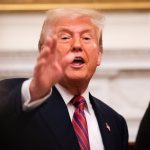The Ripple Effects of Trade Dynamics on Global Markets
The global financial landscape is currently navigating a maze of interconnected factors—geopolitical tensions, economic indicators, and high-stakes trade negotiations—all of which are sending shockwaves through markets. Investors are caught in a tug-of-war between optimism over potential trade resolutions and anxiety about lingering uncertainties. From the signing of bilateral agreements to the specter of prolonged tariff wars, every development is dissected for its implications on growth, sector performance, and cross-border capital flows.
Trade Deals as Market Catalysts
The recent US-UK trade agreement, finalized last Thursday, exemplifies how diplomatic breakthroughs can ignite market rallies. The deal, which prioritizes American agricultural exports like beef and ethanol, propelled the FTSE 100 and European indices upward as investors priced in reduced trade friction. But the real heavyweight bout remains the US-China trade war, where even whispers of progress—like the upcoming talks in Switzerland—can trigger rallies. Tech stocks, sensitive to supply-chain stability, surged with the Nasdaq climbing 1%, while oil prices edged higher on bets that a détente could revive global demand. Yet, as history shows, trade optimism can be fickle; the 20% plunge in Chinese exports to the US under Trump-era tariffs is a stark reminder of how quickly sentiment can sour.
Economic Data: The Fine Print Behind the Headlines
Beyond trade theatrics, hard economic data is quietly reshaping narratives. Stronger-than-expected US jobs figures temporarily offset concerns about China’s export slump, while Beijing’s hints about tariff exemptions added layers of nuance. China’s Ministry of Commerce struck a cautiously optimistic tone, urging Washington to demonstrate “sincerity” in negotiations—a phrase markets interpreted as a potential pivot. But beneath the surface, contradictions abound: Can robust employment numbers in one economy compensate for another’s manufacturing slowdown? And how do central banks factor these disparities into rate decisions? The answer often lies in sectoral spillovers; for instance, agricultural commodities rallied on the US-UK deal, while tech stocks remain hostage to semiconductor trade policies.
Geopolitics and the Domino Effect
Trade negotiations rarely exist in a vacuum. The US-China talks, for example, are shadowed by broader tensions over Taiwan and intellectual property disputes—variables that could derail progress overnight. Similarly, the UK’s post-Brexit trade maneuvering intersects with European energy crises and inflation battles, creating ripple effects across currencies and bond markets. Investors are left to decode not just economic signals but political subtexts: Will Switzerland’s neutral venue foster compromise, or become another stage for performative stalemates? Meanwhile, emerging markets brace for collateral damage; weaker currencies and dollar-denominated debt burdens amplify their vulnerability to trade-war aftershocks.
Navigating the New Abnormal
The interplay of trade, data, and geopolitics has turned markets into a high-stakes game of anticipation. While the US-UK deal offers a blueprint for pragmatic agreements, the US-China conflict underscores how deeply markets are wired for risk-on/risk-off swings. Investors must now weigh short-term rallies against structural vulnerabilities—like overleveraged sectors or supply-chain bottlenecks—that could explode if talks falter. One thing’s certain: in this era of economic brinkmanship, the only constant is volatility. And as central banks and corporations alike hedge their bets, the markets’ next move might just hinge on which bubble deflates first. *Pop.*







